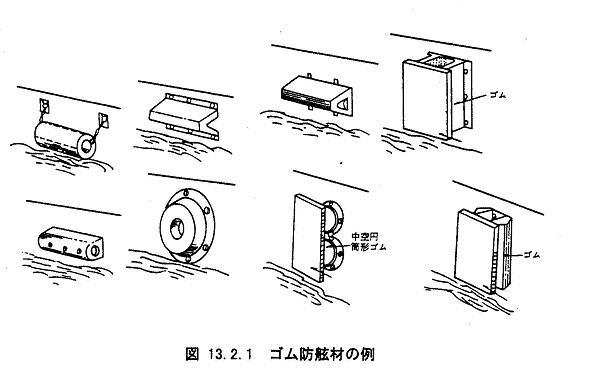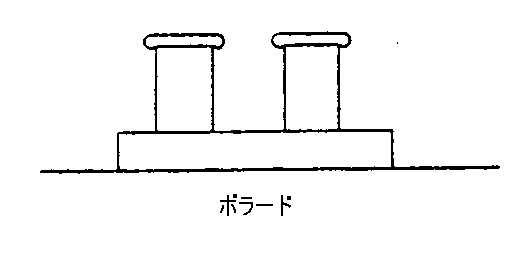- Yokohama-shi Top Page
- Business
- Menu by field
- Harbor
- Port Business Glossary
- Port Business Glossary - Ho -
Here's the text.
Port Business Glossary - Ho -
Last Updated August 5, 2024
A B C D E F G H I J K L M N O P Q R S T U V W X Y Z
-Ah- -- -- -- -- -- -- -- - La- --wa-
-Ho-
- Port Sales (port sales)
- PR activities to attract ships and cargo and promote the use of ports. Since the dispatch of missions overseas in 1979, Yokohama Port has been actively engaged in domestic and overseas activities.
- Port charge (port charge)
- The port cost. Costs incurred by using the port, such as entering a port, anchored, or leaving a port.
- Non-trade balance (invisible trade balance)
- Balance of transactions of services other than commodity trade. It is also called an invisible (intangible) trade balance. The contents can be broadly divided into payment of service fees arising from commodity trade, such as freight fares, payment of capital profits associated with capital transactions, and payment of service fees that arise independently from transactions such as travel.
- Trade balance (trade balance)
- Proceeds of receipt and payment with foreign countries arising from import and export. It is also called the balance of commodity trade or tangible trade (visible trade).
- fender
- Attached to a quay, etc. to prevent contact impact on the port side of the ship. Rubber is used in normal quays.

- Normal
- A line indicating the flat arrangement of structures such as breakwaters, quays, and seawalls.
- Three Japanese Ships
- Nippon Yusen, Mitsui O.S.K. Lines, and Kawasaki Kisen. In 1964, in order to prevent excessive competition and strengthen corporate management capabilities, the consolidation of Japanese shipping companies was reorganized into six groups: Nippon Yusen, Mitsui O.S.K. Lines, Kawasaki Kisen, Yamashita New Nippon Kisen, Japan Line, and Showa Line. In June 1989, the Japan Line and Yamashita New Nippon Kisen merged to form the Navix Line and the Japan Liner System. Nippon Yusen and Nippon Liner System merged in October 1991, and Nippon Yusen and Showa Line merged in October 1998. In April 1999, Mitsui O.S.K. Lines and Navix Line merged to change its trade name to Mitsui O.S.K. Lines Ltd.
- Packaging
- This refers to the technology and applied state of applying appropriate materials, containers, etc. to protect its value and condition when storing, transporting, or using goods. This is roughly divided into exterior, interior, individual and cargo types.
- seawall
- It refers to embankments, seawalls, etc. to prevent seawater from entering the land.
- Breakwater
- It is provided to protect the inside of the port from waves generated by typhoons and monsoons, to maintain calmness in the port, facilitate cargo handling, safety of navigation and berthing, and security of facilities in the port.
- hogging
- In stormy weather, when a ship comes on the waves, the force of buoyancy and gravity works to fold back and forth of the hull down. (Anti) saging
- Bonded transport
- A form of tax retention system. In order to supplement or promote the use of the customs area, foreign goods may be transported between the customs area, etc., in the case of customs approval. OLT
- Bonded storage area
- A type of bonded area created by the 1994 revision of the Customs Law, which combines a conventional bonded house and a bonded warehouse. It is used by the owner of the facility for its own business, and has been approved by the Director General of Customs as a place where foreign cargo can be loaded, transported, and stored in accordance with a Cabinet Order. Comprehensive tax-reservation area
- Taxpay plant
- A type of tax reserve. A place where the owner of the facility can process and manufacture foreign goods without tariffs as their own business.
- Bonded area
- It is also an area established because it is necessary to temporarily place cargo under the supervision of customs when conducting customs clearance procedures for import and export goods, and at the same time, it is also an area where foreign goods can be put on hold and export procedures have not been completed. There are five types of customs-based areas, "designated tax-based areas", "tax-based storage areas", "tax-based factories", "tax-based exhibition halls", and "general-based tax-based areas", as required by the Customs Law.
- Tax Exhibition Hall
- A type of tax reserve. A place where exhibits that are foreign goods can be displayed and used without tariffs at international expositions, trade fairs, etc.
- Box culvert
- A box-shaped hollow frame made of reinforced concrete. It is used for sewage, underground passages, and communal ditches.
- Box rate (box rate)
- Fares determined on a container-by-container basis, regardless of the capacity of cargo. There are two types, CBR (Comodity Box Rate) and FAK (Freight on All Kind).
- Hot Delivery Service (HDS)
- A service that fixes schedules on regular days and scheduled times, gives top priority to customs clearance operations, etc., and enables delivery of cargo within 2-3 hours after the start of ship cargo handling. It mainly deals with apparel cargo, which fluctuates in demand, and fresh foods that require freshness.
- Bolard (bollard)
- Two pillars placed on the deck to connect the ship's maze.
※There are various interpretations and examples of definitions are posted.
- Ship
- Refers to a cruise ship in contrast to a barge, pulling ship or other business ship.
- Ship Receipt (M/R)
- Before the issuance of B/L, the shipping company receives cargo from the shipper together with S/O and prepares it as a voucher when loading is completed. In the case of a conventional ship, this is called M/R (Mate’s Receipt). Equivalent to D/R (Dock Receipt) in the case of a container ship.
- Delivery of the ship
- →FOB(Free On Board)
- pontoon (pontoon, ponton)
- It is a floating body shaped like a rectangular shape that makes up the Ukisan Bridge, and is made of wood, steel, and reinforced concrete. It can also refer to Ukisan Bridge itself.
- Honmoku Building Materials Wharf Management Association
- An organization established in May 1968 as the governing body of Honmoku Building Materials Wharf. Members have a contractor for handling gravel and sand building materials such as gravel and sand. Currently, he is also engaged in the operation of Honmoku Building Materials Bath and Kanazawa Lumber Port landing site, including Honmoku Building Materials Wharf. (jurisdiction: Southern Administration Division)
Inquiries to this page
Port and Harbor Bureau General Affairs Department General Affairs Division
Telephone: 045-671-2880
Telephone: 045-671-2880
Fax: 045-671-7158
Email address: kw-somu@city.yokohama.jp
Page ID: 661-140-715







